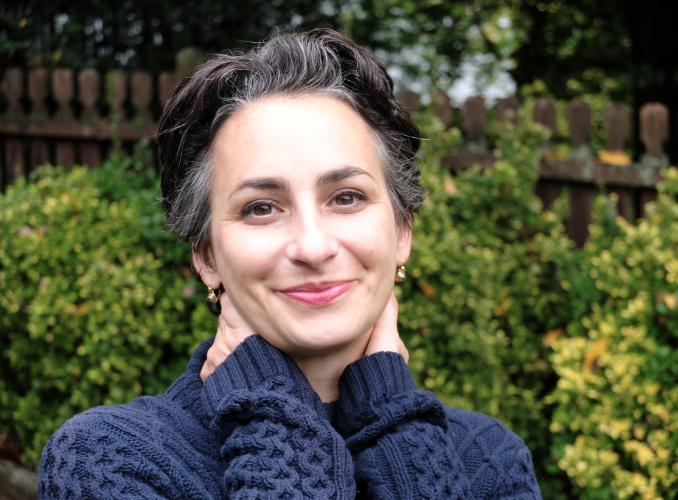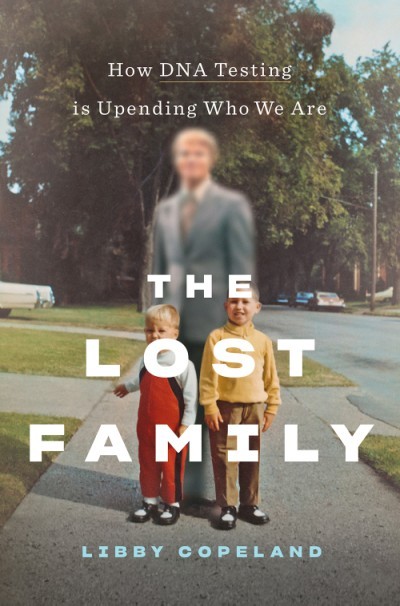In November of 2017, journalist Libby Copeland published an article for the Washington Post about at-home DNA testing called “She thought she was Irish — until a DNA test opened a 100-year mystery.” Like the burgeoning field it took as its subject, the article made a big splash — Longreads and Chartbeat both selected Copeland’s article as one of the year’s most engaging stories. Now, Copeland’s expanded research into the field of commercial DNA testing — and the stories of family, reunions, and questioned identity the industry raises — is available in the form of her new book The Lost Family: How DNA Testing Is Upending Who We Are (Abrams).
“I came across this astonishing story of a woman named Alice who was tested in the early days of recreational DNA testing, which is how this industry is broadly known, and had gotten a profound surprise and had taken two and a half years to understand her results,” Copeland says about the catalyst for her 2017 article. “The story ran and it got this really big response. I got hundreds of people writing to tell me their DNA stories.” As the letters and emails and online comments poured in, Copeland realized the potential breadth of the story. “The stories really varied in terms of the experiences and the outcomes,” she says. “I thought, ‘Wow, this is really this seismic change.’”

Libby Copeland
The outpouring Copeland received helped build The Lost Family. The book is meticulously researched and succeeds admirably in cataloguing a moment in which the way we view culture and history and identity is changing — and the way an emerging technology is helping fuel that change. At no point, though, does The Lost Family lose sight of the human stories that make it. “There are so many people who are undergoing these kinds of changes to their identities without any support or broader national conversation around them that there was a hunger to talk about it,” Copeland says.
Most people, when they buy the test, expect to get a “pie chart” graphic of their genetic heritage. Some people, though, can get a list of genetic relatives. Few people, Copeland says, imagine that, in buying a DNA-testing kit, they will have to grapple with “the notion that you’re going to find something that totally upends your sense of self and your own origin narrative and makes you go back to the beginning of your life and question everything.”

Copeland continues, “I’ll give you an example. There’s a guy in my book. He was a sperm donor in the 1970s, and at the time there was zero way for anyone to anticipate that there would ever be DNA testing in some far-off future that would make donor anonymity moot.” This donor already had a family. He was married and had children. “He was helping other people make their families, and he was making ends meet,” Copeland explains. “Decades later, his daughters give him this kit. … and that is how all his donor children find him, and there’s like 22 of them.”
At-home DNA testing is still relatively new. And, as with all emerging technologies, it has been impossible to predict all the repercussions. The automobile preceded the seatbelt, and the seatbelt existed long before there were laws mandating its use.
“The earliest DNA tests started in 2000, which most people don’t know because the kind of tests that were being offered back then were really different than what’s being offered right now and they weren’t that useful in doing your family history,” Copeland explains. “They could answer certain questions, but it was more of a niche thing for hardcore genealogists. So 2012 is the moment that things change. To me, the moment when everything changes is when Ancestry introduces its DNA test.”
[pullquote-1]
Copeland references a now-famous Ancestry commercial from the time about “Kyle,” who learned that his ancestry was Scottish, not German, and ends up trading in his lederhosen for a kilt. That ad, which has been picked apart by academics for a whole host of reasons, nonetheless paints a picture of what commercial DNA testing is intended to be. “It’s recreational,” Copeland says. “It’s low-investment. It’s not going to cost that much, and it’s going to be really fun. And it’s not going to be a profound thing; it’s just going to be an enriching thing but not a disruptive thing.” Copeland continues, “For most people, it is that. It’s an enriching thing but not a disruptive thing. But there’s a significant minority of people for whom it is disruptive.
“There’s a whole universe of people who use DNA testing because they have these suspicions or because they’re looking for genetic family, like adopted people or donor-conceived people who know they’re donor-conceived,” Copeland says. “It’s not just the surprises. The surprises are usually the most cinematic and jarring, but there are a lot of other people who are finding genetic kin or answering questions that they’ve held all their lives through this technology. So, broadly, I think it’s redefining family, not just through the surprises, but across the board for a lot of people.”